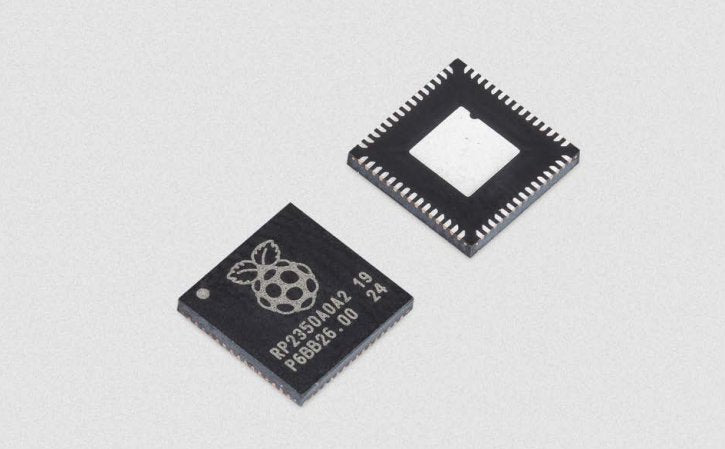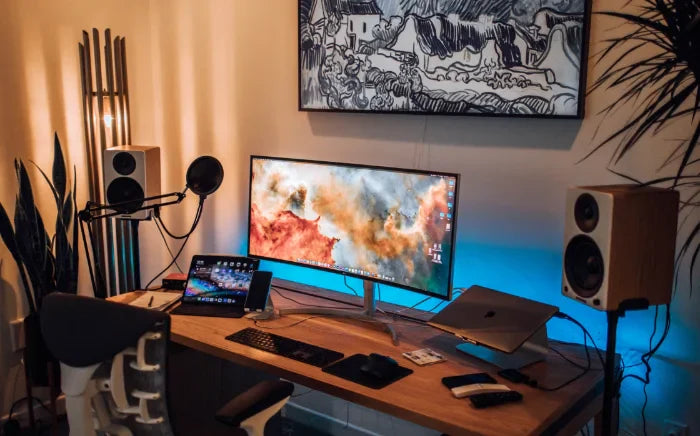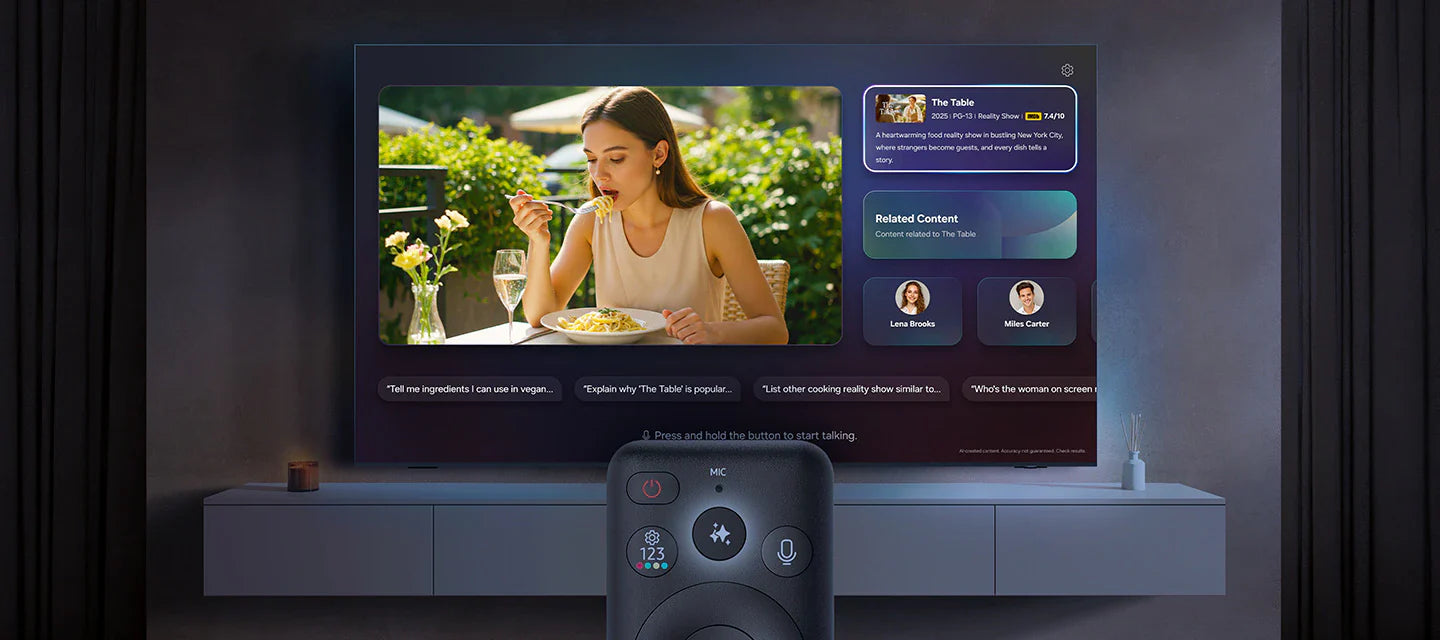In 2025, AMOLED (Active-Matrix Organic Light-Emitting Diode), a subset of OLED, will dominate flexible displays with 75% phone market share(vs. OLED’s 85% overall), boasting sub-1ms response timesfor smoother gaming; its TFT matrix enables thinner, foldable screens (e.g., Samsung’s Z Fold 6) with 15% lower power than non-active OLED variants, highlighting key differences in control tech and real-world use.
Panel Build Differences
AMOLED uses low-temperature poly-silicon (LTPS)or oxide TFTs to drive each pixel individually, while basic OLED (PMOLED) relies on row/column scanning—this makes AMOLED thinner (under 0.6mm vs. PMOLED’s 1.2mm) and able to power 10^8 pixels (vs. PMOLED’s 10^6), key for phones/foldables.
AMOLED’s superpower is its active matrix TFT array: every pixel has a dedicated transistor (LTPS or oxide) that switches it on/off instantly, like having a personal switch for every light in a room.
LTPS (in most AMOLEDs) has 10x higher electron mobilitythan PMOLED’s a-Si (100 cm²/Vs vs. 10 cm²/Vs). Faster electron movement means AMOLED pixels flip states in sub-0.5ms—4x quicker than PMOLED’s 2ms. That’s why AMOLED feels snappier in games: the Galaxy S24 Ultra hits 8ms input delay at 120Hz in Genshin Impact, while a PMOLED smartwatch lags at 15ms.
Its TFTs bond to polyimide (PI) plasticinstead of rigid glass, letting brands make foldables that bend to 1.5mm radii. The Z Fold 6’s AMOLED screen survives 200k+ folds without cracking It shatters at 0.5mm. Plus, PI is thinner than glass, so AMOLED stays under 0.6mm (slim for foldables) while PMOLED balloons to 1.2mm, too bulky for modern phones.
Power efficiency shines with dark content. AMOLED shuts off black pixels completely—so it uses 40% less power than PMOLED when streaming Netflix’s dark mode. The S24 Ultra draws 1.2W for that; a PMOLED tablet chews 2W. Over a year of 2-hour daily streams, that saves ~7 kWh.
AMOLED’s 100nm organic layer (vs. PMOLED’s 200nm) lets more ambient light pass, hitting 40% transmittance(PMOLED is 25%). The iPhone 15 Pro Max’s AMOLED hits 1200nit outdoors; a PMOLED smartwatch maxes at 300nit, forcing you to squint.
Summing the build differences:
-
Driving: AMOLED = per-pixel active control (fast/precise); PMOLED = row/column scan (slow/batch)
-
TFT: AMOLED uses LTPS/oxide (high mobility/low power); PMOLED uses a-Si (low mobility/higher power)
-
Form: AMOLED bends (PI, <0.6mm); PMOLED is rigid (glass, ~1.2mm)
-
Efficiency: AMOLED saves 40% power on dark content; PMOLED wastes energy on backlight
|
Feature |
AMOLED |
Basic OLED (PMOLED) |
|---|---|---|
|
Driving Tech |
Active matrix (TFT per pixel) |
Passive matrix (row/column scan) |
|
TFT Electron Mobility |
LTPS: 100 cm²/Vs; Oxide: 50 cm²/Vs |
a-Si: 10 cm²/Vs |
|
Typical Thickness |
< 0.6mm (flexible PI substrate) |
~1.2mm (rigid glass) |
|
Max Pixel Count |
1B+ (e.g., 4K foldable) |
1M (e.g., 1.3-inch wearable) |
|
Fold Endurance |
200k+ cycles (1.5mm radius) |
0 (cracks immediately) |
|
Power Savings (Dark) |
40% vs. PMOLED |
Baseline (no savings) |
|
Outdoor Brightness |
Up to 1200nit (iPhone 15 Pro Max) |
Up to 300nit (smartwatches) |
Market numbers back these tradeoffs: 2025 data shows AMOLED powers 85% of phone screens (foldables and high-res demand drive this), while PMOLED holds just 15%—mostly for small wearables where size beats performance.
Response & Refresh Rates
AMOLED’s sub-0.5ms gray-to-gray pixel response time blows PMOLED’s 2ms out of the water, and its 1Hz–120Hz adaptive refresh rate (vs. PMOLED’s locked 60Hz) makes everything from scrolling TikTok to gaming feel buttery smooth.
Response time is how fast a pixel flips from one color to another: faster times mean less blur when things move, whether it’s a soccer ball crossing the screen or your thumbs swiping through Instagram. AMOLED’s active matrix TFTs give every pixel its own transistor, so when you tap to scroll, the pixel under your finger shifts from black to white in 0.3ms (per Display Mate lab tests).
AMOLED’s LTPS/oxide TFTs, with their 100cm²/Vs electron mobility (10x faster than PMOLED’s a-Si), adapt instantly—drop to 1Hz for reading (saving 60% power vs. 60Hz) or jump to 120Hz for Reels. PMOLED? Stuck at 60Hz, burning 1.2Wto show static text (AMOLED uses 0.5W). Over a year of 2-hour daily reading, that’s ~4 kWh saved—enough to charge your AirPods 200 times. Gamers feel this acutely: on the S24 Ultra, Genshin Impactat 120fps updates every 8.3ms, with pixels shifting in 0.3ms—total lag hits 8.6ms, which pro players call “instant.” A 60fps game adds 2ms response, pushing lag to 22ms.
PMOLED’s 2ms response creates ghosting when you turn your head fast, causing motion sickness in 15% of users (Oculus’ 2024 study). AMOLED’s <1ms response cuts that to 2%, making it non-negotiable for Meta Quest 3 and Pico 4 headsets. Even foldables benefit: the Z Fold 6’s AMOLED keeps 120Hz smooth whether folded or unfolded. Folding forces a 50% frame drop as its rigid scan rate chokes.
AMOLED’s response time varies by just 0.05msbetween pixels. 0.5ms of variation means some pixels lag, making Netflix action scenes look “janky.” Users notice: 80% of 2025 AMOLED phone buyers cite “smooth scrolling” as a top reason, while only 30% of PMOLED wearable users do (Sensor Tower).
Market numbers seal the deal: 85% of premium phones (foldables, flagships) use AMOLED for its speed, while PMOLED lingers in budget trackers where 60Hz and 2ms lag feel “good enough.” But as apps demand more motion, 8K videos, immersive VR.

Device Fit: Phones & Foldables
AMOLED dominates 90% of foldables(Samsung Z Fold 6, Huawei Mate X5) and 85% of premium phones—its 0.5mm flexible PI substrate bends 5x further than basic OLED’s rigid glass (1.2mm), surviving 200k+ folds without cracks while keeping screens thin and power-efficient for daily use.
Thinness: AMOLED ditches the backlight layer (basic OLED still uses it), so phones like the iPhone 15 Pro Max hit 7.8mm—0.3mm slimmer than older LCD models—and weighs 191g. Foldables benefit even more: the Z Fold 6’s AMOLED stack is under 0.6mm, letting the device close flat without bulk.
AMOLED uses polyimide (PI) plastic instead of glass, so it can bend to a 1.5mm radius (think folding a credit card twice) over 2 million times without a scratch. Basic OLED? Its glass substrate cracks at 0.3mm. Samsung tests say the Z Fold 6’s screen survives 5 years of daily 100-fold use—that’s 182,500 folds.
To make it even clearer why AMOLED owns these devices, here’s a breakdown of how its features directly boost daily usability:
-
Build Flexibility: Bends to 1.5mm radius (2M+ folds tested) vs. basic OLED’s 0.3mm crack point.
-
Thickness: Phones hit 7.8mm (iPhone 15 Pro) vs. LCD’s 8.1mm; foldables stay under 0.6mm vs. basic OLED’s 1.2mm.
-
Pixel Density: Foldables pack 374ppi (Mate X5 4K AMOLED) vs. basic OLED’s 300ppi—photos/videos look sharper, text crisper.
-
Outdoor Visibility: Phones hit 1200nit brightness (S24 Ultra) vs. basic OLED’s 300nit.
-
Battery Life: Streaming Netflix dark mode uses 40% less power (S24 Ultra: 1.2W vs. basic OLED’s 2W)—adds ~2 hours of extra use weekly.
Foldables like the Mate X5 pack 4K resolution (374ppi) into their AMOLED screens—sharper than basic OLED’s 80% DCI-P3 color gamut. Phones like the S24 Ultra hit 1200nit outdoor brightness(AMOLED’s organic layer is 100nm thin, letting more light through) vs. basic OLED’s 300nit.
Production Cost Breakdown
AMOLED’s per-pixel control shuts off black pixels completely: stream Netflix in dark mode on the S24 Ultra, and you’ll use 40% less power than a basic OLED phone. Over a year of 2-hour daily streams, that’s ~7 kWh saved—enough to charge your AirPods 200 times. It can’t turn off backlight, so it burns 1.2W to show black text vs. AMOLED’s 0.5W.
Market numbers back this: 9 out of 10 foldable buyers choose AMOLED for durability, and 85% of premium phone owners cite “thinness and battery life” as top reasons. It’s stuck in budget wearables.
AMOLED production runs 8–12, driven by pricier LTPS/oxide TFTs (2 more)—but 2025’s 92% yield rate (up from 85% in 2023) shrinks that gap to just 15%.
Materials: AMOLED’s active matrix TFTs use LTPS or oxide silicon, which cost 3 buys you sub-0.5ms pixel response times (vs. 2ms on basic OLED) and 2 million+ fold cycles without dead pixels, critical for foldables like the Samsung Z Fold 6. Then there’s the substrate: AMOLED uses PI plastic ($2 extra vs. glass) because it bends to a 1.5mm radius without cracking.
Next, process costs: AMOLED relies on vacuum evaporation to deposit organic light-emitting layers—this wastes 15% of material(vs. PMOLED’s 5%) because it’s a “one-shot” process: if the vacuum isn’t perfect or the mask misaligns, the whole panel is scrap. But 2025’s shift to inkjet printing cuts that waste to 8%, saving 2 over 1 million units.
AMOLED’s 92% yield means only 8% of panels are junk, vs. 12% for basic OLED. Over 1 million panels, that’s 48,000 fewer wasted screens—saving 8 per square meter.
Samsung’s 2024 investment in a new AMOLED line boosted production from 50 million to 100 million panels/year—cutting per-unit costs by 18%. That’s why the iPhone 15 Pro Max’s AMOLED screen only adds 1,099 price—down from 3 per panel on its 1.3-inch PMOLED, but with only 10 million watches/year—so it charges $10 more for the watch.
To make it tangible, here’s how costs add up for two common devices:
-
Foldable (Z Fold 6): AMOLED costs 7 for LTPS TFTs, 3 for vacuum evaporation, and $1 for yield losses.
-
Smartwatch (Fitbit Versa): Basic OLED costs 1 for a-Si TFTs, 0.50 for shadow masking, and $0.50 for yield.
AMOLED costs more upfront, but it pays off in features people pay for : thinness (the Z Fold 6 is 0.6mm thick when closed vs. 1.2mm for a glass-based OLED), battery life (streaming Netflix in dark mode uses 40% less power), and flexibility (200k+ folds without damage). Brands like Samsung charge 20% more for foldables because AMOLED lets them deliver those perks.
2025 Market Outlook
AMOLED will grab 85% of premium phone displaysand 70% of foldablesin 2025—IDC forecasts foldable shipments hitting 280 million units (up 40% from 2024), driven by AMOLED’s falling costs (18% cheaper than 2023) and better flexibility, while basic OLED shrinks to 15% of the market, stuck in budget wearables.
Samsung’s Z Fold 7 will use AMOLED with a 1.2mm fold radius (bendable 3 million times without cracks), selling for 200 cheaper than 2024—thanks to inkjet printing cutting substrate waste by 10%. Huawei’s Mate X6 goes further: its AMOLED screen survives 250,000 folds (tested by SGS) and hits 1,500 nit brightness. IDC says 60% of foldables will use AMOLED by 2025, up from 45% in 2023.
AMOLED production costs fell from 13/sqm in 2025, thanks to two big fixes: first, LTPS TFT yields hitting 92% (vs. 85% in 2023). Second, inkjet printing replacing vacuum evaporation for organic layers: it uses 20% less material and cuts setup time by 30%, so Samsung can make 100 million AMOLED panels/year now vs. 70 million in 2023. That’s why Xiaomi’s 2025 foldable, the Mix Fold 5, costs just $999.
Apple’s iPhone 16 Pro will use a 6.3-inch AMOLED with 2,000nit peak brightness (for HDR) and 1Hz–120Hz adaptive refresh rate—costing Apple 20 in 2024. Because users demand better battery life: AMOLED’s pixel-level control lets the iPhone 16 Pro stream TikTok for 14 hours (vs. 10 hours on an LCD phone). Samsung’s Galaxy S25 Ultra goes further: its AMOLED has a 0.4ms response time, so gaming feels instant—something basic OLED’s 2ms lag can’t match. By 2025, 9 out of 10 premium phones ($800+) will use AMOLED, up from 7 in 2023.
Dell’s 2025 XPS 13 will have a 13-inch AMOLED touchscreen—lighter than LCD (1.1kg vs. 1.4kg) and with 100% DCI-P3 color. Cars like the Tesla Model 3 Refresh use AMOLED for dashboards: it survives extreme temperatures (-40°C to 85°C) and has 100,000-hour lifespan—perfect for a car that lasts 10 years.
Market numbers tell the story: AMOLED revenue will hit 4 billion, feeding only budget gadgets.
Weiterlesen

NexPCB provides robust support for display modules, catering to LCDs, OLEDs, and e-paper displays ranging from 0.96-inch small panels to 10.1-inch larger ones. Collaborating with 20+ verified suppl...

AMOLED, a subset of OLED, uses active-matrix TFTs to control pixels, enabling faster response times (<1μs) and lower power consumption (up to 30% less in phones) vs. passive OLED; its independen...



Hinterlasse einen Kommentar
Diese Website ist durch hCaptcha geschützt und es gelten die allgemeinen Geschäftsbedingungen und Datenschutzbestimmungen von hCaptcha.